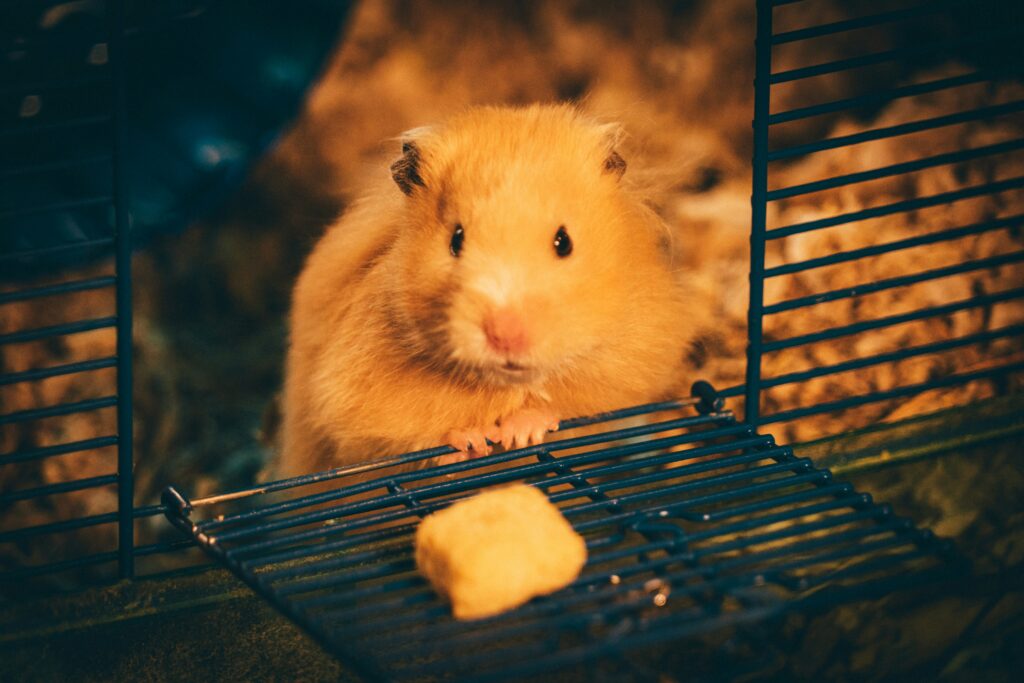Do Hamsters Hibernate? Shocking Revelations Every Owner Must Know!
Introduction
Popular pets, hamsters are renowned for their cute appearance and lively disposition. If you own or are a hamster enthusiast, you may be curious in how they behave in the winter. I’m often asked, “Do hamsters hibernate?” We will discuss myths, delve into the intriguing world of hamster hibernation, and provide you all the information you need to keep your hamster happy and healthy in this blog.
Table of Contents
What is Hibernation
In endotherms, hibernation is a state of inactivity and metabolic depression. It’s an adaptation that helps animals live through times when food is scarcer and the weather is severe. An animal’s body temperature, heart rate, and respiration rate all drop sharply during hibernation in order to preserve energy, until the weather becomes better.

Are Hamsters Hibernating?
Hamsters do not hibernate in the conventional sense in contrast to several other tiny mammals. Rather, they go into a condition called torpor. When food becomes limited or temperatures dip, hamsters can enter a short-term, reversible state similar to hibernation called torpor, which helps them store energy. Understanding the difference between hibernation and torpor will help you better understand your hamster’s needs.
Signs Your Hmansters are in Torpor.
Being aware of the symptoms of torpor will enable you to take the necessary precautions to protect your hamster from harm. The following are typical signs that your hamster may be in a state of torpor:
- Reduced Activity: Compared to normal, your hamster may seem lethargic and less energetic.
- Cool to the Touch: A torpid hamster’s body temperature may have dropped, making it feel colder to the touch.
- Shallow Breathing: When in torpor, breathing slows down and becomes shallow.
- Unresponsive: Your hamster might not react at all, or not at all soon, to stimuli.
Why Do Hamsters Enter Torpor?
Environmental factors are the primary cause of hamster torpor.
These are as follows:
- Low Temperatures: Torpor is a state of energy conservation that hamsters may undergo when the temperature falls below 65°F (18°C).
- Absence of Food: In order to endure longer periods without food, hamsters may lower their activity and metabolism if food is scarce.
- Short Photoperiods: Torpor in hamsters can be brought on by fewer daylight hours in the winter.
How to Prevent Torpor in Hamsters

Preventing torpor is crucial to maintaining your hamster’s health. Here are some tips to keep your pet warm and active:
Preserve the Ideal Temperature: Maintain a temperature range of 65°F to 75°F (18°C to 24°C) in your hamster’s habitat. If required, use a heating pad or space heater.
Provide Enough Bedding: To keep your hamster warm, provide an abundance of bedding materials, such as soft hay or shredded paper.
Frequent Feeding: Make sure your hamster always has access to clean water and fresh food.
Lighting: To replicate the rhythms of natural lighting. Maintain a consistent light-dark cycle to mimic natural daylight patterns.
What to Do If Your Hamster Enters Torpor
If you suspect your hamster has entered torpor, act immediately to bring them back to life:
- Warm Them Up: Use a heating pad or put your hamster in a warm place to gradually warm them up. Direct heat sources should be avoided as they can burn people.
- Hydration: If your hamster is too weak to drink on their own, offer water or an electrolyte solution diluted with water using a dropper.
- Monitor Closely: If your hamster does not improve in a few hours, pay special attention to them and see a veterinarian.
Debunking Common Myths About Hamster Hibernation
There are several misconceptions about hamster hibernation. Let’s look into some of the most common myths about hibernation of hamsters.
- Myth: Hamsters Hibernate Like Bears: Unlike bears, hamsters do not undergo long-term hibernation. They enter short-term torpor instead.
- Myth: Torpor is Harmless: While torpor is a natural response, prolonged or frequent episodes can be harmful to your hamster’s health.
- Myth: All Hamsters Hibernate: Not all hamsters will enter torpor. It depends on their environment and individual health.
The Importance of Veterinary Care
A veterinarian should see your hamster on a regular basis for checkups. A veterinarian may offer advise on how to take good care of your pet, identify any health problems early, and help prevent torpor. Torpor episodes in your hamster may be a sign of an underlying health issue that needs to be treated by a veterinarian as soon as possible as the condition requiers emediate medical attenion of a vet.

Conclusion
Understanding the difference between hibernation and torpor is key to providing the best care for your hamster. By maintaining a warm and stable environment, providing regular food and water, and monitoring their behavior, you can help prevent torpor and ensure your hamster remains healthy and happy. Always consult a veterinarian if you have any concerns about your hamster’s health.
FAQ
A: Not all hamster species enter torpor. It largely depends on environmental conditions and individual health factors.
A: Hamsters can stay in torpor for a few hours to a few days. If your hamster remains in torpor for more than 24 hours, consult a veterinarian.
A: Yes, prolonged or frequent torpor can be harmful and may indicate underlying health issues. It’s important to take preventive measures and seek veterinary care if necessary.
A: Hamsters in torpor will have slower breathing, feel cooler to the touch, and be unresponsive, whereas sleeping hamsters will respond to stimuli and maintain a normal body temperature.
A: It’s better to use a space heater or heating pad to gradually warm up your hamster. Direct heat from a lamp can cause burns or overheating.
By understanding and addressing the potential for torpor in hamsters, you can ensure a safe and comfortable environment for your furry friend throughout the year.
Did you know baby chinchillas are called “kits“? For more interesting facts about owning a baby chinchilla, click here.
